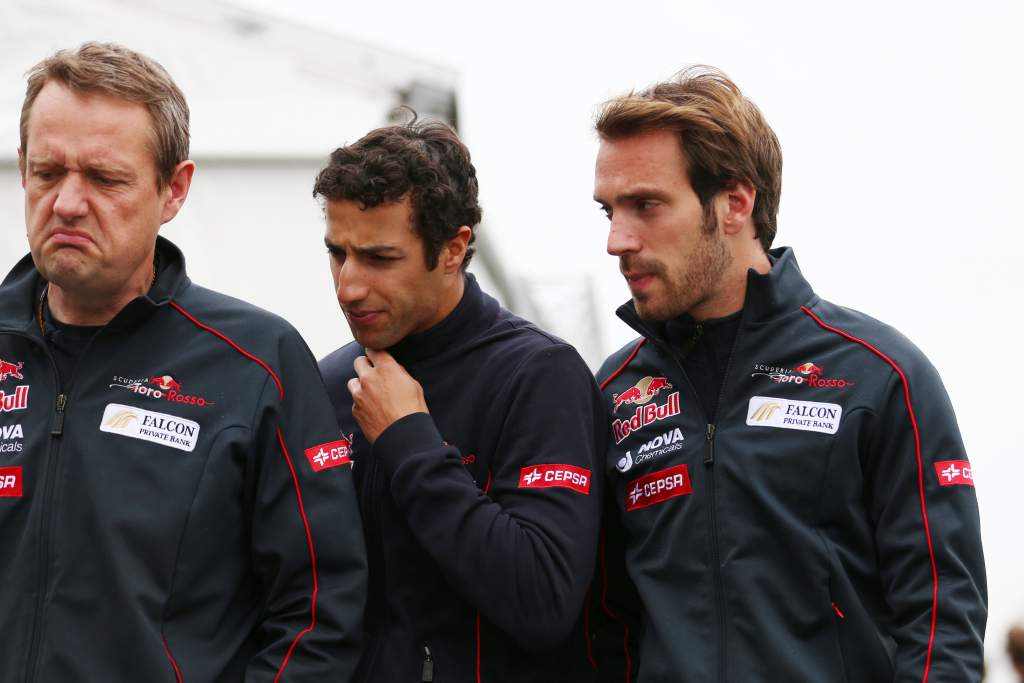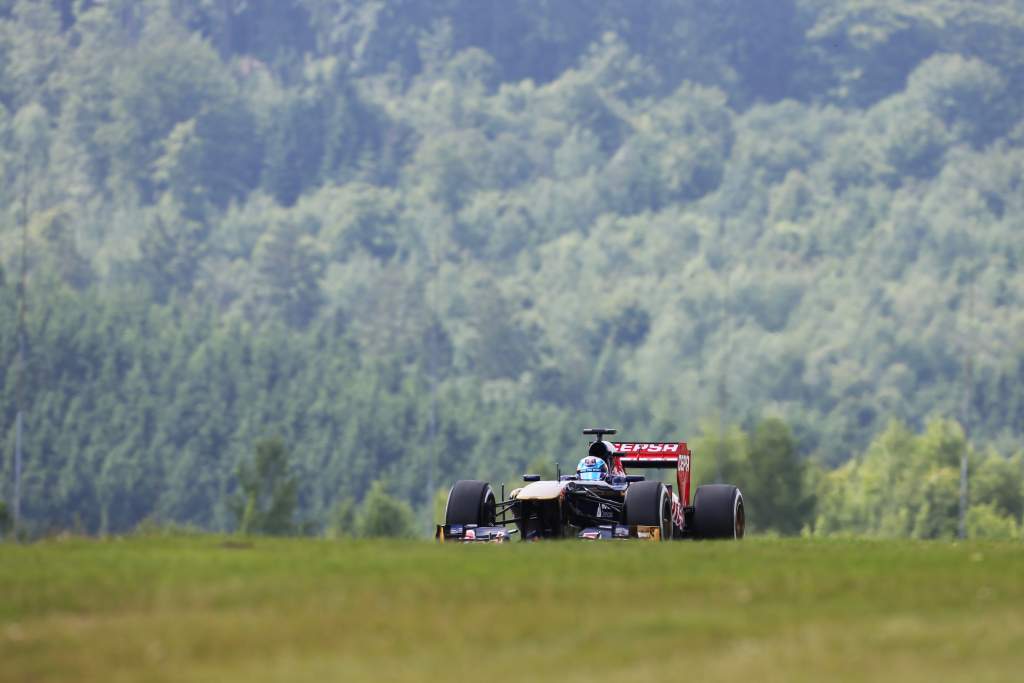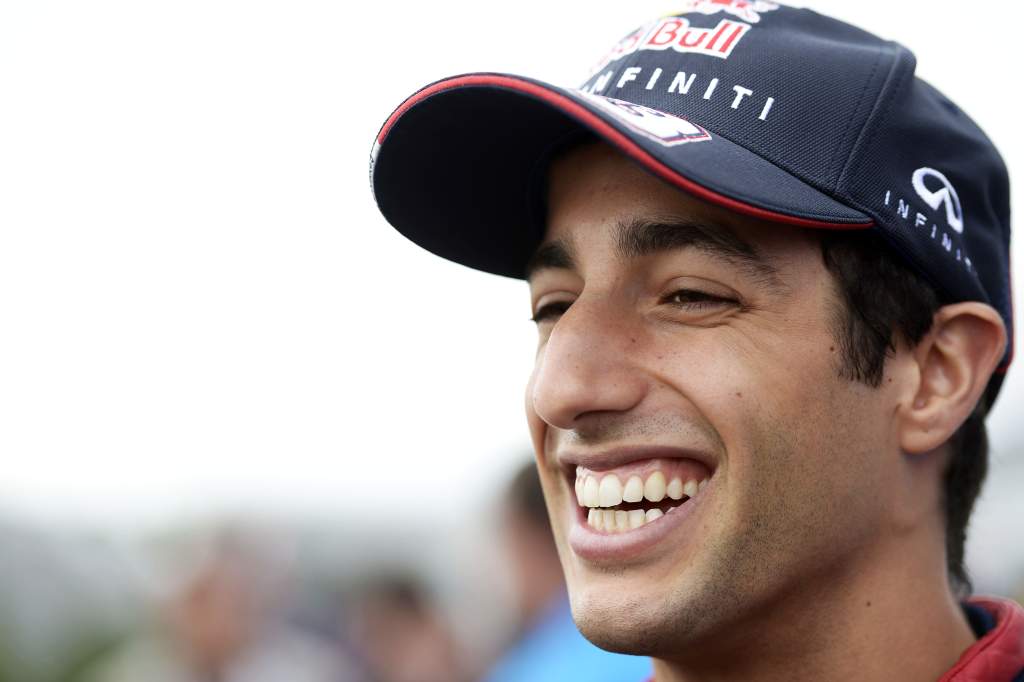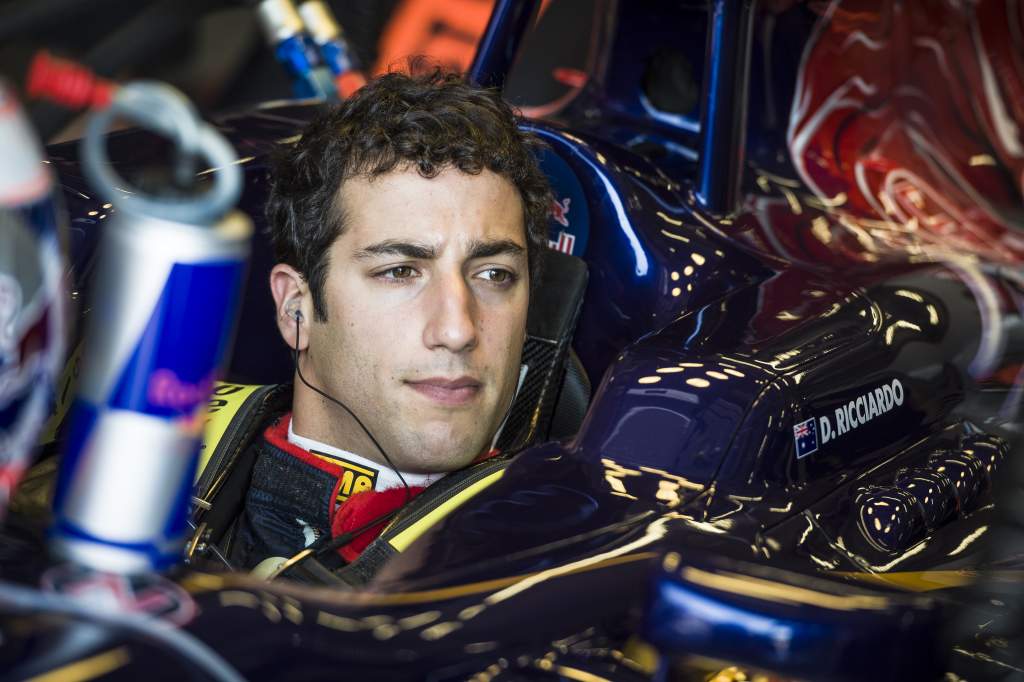Up Next

The simple version of the story of Daniel Ricciardo’s Formula 1 career is that it was smooth sailing all the way up to the point he joined McLaren in 2021.
But it’s never that straightforward, and it’s often forgotten that when he faced the most important fork in the road he was battling some badly-timed struggles.
Back in 2013, Ricciardo was in his second full Formula 1 season with Toro Rosso, having previously banked half-a-season with back-of-the-grid HRT.
Red Bull regarded him as a driver capable of tremendous speed, particularly in qualifying. He’d caught the eye both with testing performances on the occasions he got behind the wheel of the Red Bull and with some impressive Saturday showings for Toro Rosso.
But there were question marks hanging over his ability to translate that pace consistently. The fact he often qualified stronger than he race could be interpreted as outperforming the car over a single lap (not in literal laptime, but by extracting closer to 100% of its potential than rivals and jumping ahead of drivers who should have been quicker) and then regressing to the mean in the race. Or, it could reflect a genuine disparity in his race-stint capabilities.
The key date is June 27, when Mark Webber announced he would retire from F1 at the end of the season. That opened up a Red Bull drive for 2013, with the team making it clear that Ricciardo and Toro Rosso team-mate Jean-Eric Vergne were at the front of the queue to replace him – but not dead certs. That meant they still had work to do heading into that year’s British Grand Prix weekend.
Looking at the big picture, Ricciardo was the more impressive of the pair over the duration of their alliance at Toro Rosso. But at the moment the Red Bull vacancy arose, Vergne was the driver in the ascendancy while Ricciardo was all at sea.

Vergne headed to Britain off the back of finishing eighth in Monaco, then sixth in Canada. These were both outstanding weekends from Vergne, among the very best the future two-time Formula E champion produced during an up-and-down, but overall effective, F1 career.
Ricciardo had struggled, failing to score in either race and looking the lesser of the two drivers by a distance – particularly when his decent qualifying performance in Montreal (ninth before a penalty for a pit procedure infringement) was followed by a poor race struggling badly with tyre management in 15th place.
That was only two races, but over the balance of the seven races so far that season Vergne had been the more impressive. Only in China, where Ricciardo drove superbly to qualify and finish seventh, did he have a decisive upper hand.

This led Ricciardo to some soul-searching and also intensive scrutiny of the approach taken by him and his side of the garage. He explained this on the Thursday of the British GP that year.
“Since Canada, I have spent a bit of time with the guys on my side of the garage and we’ve definitely had to assess a few things,” said Ricciardo.
“We’ve taken a bit of a different approach, not throwing things at the car and hoping it works. If we feel it’s going to work, we do it, but let’s not chase our tails too much.”
Ricciardo went into what proved to be a four-race run with a very different approach but under the immense pressure of knowing that what happened then could dictate his F1 future.
He had a good idea Red Bull felt he was the better all-round prospect than Vergne, but this was an ideal opportunity for it to put intense pressure on to see how the pair responded. For Red Bull, in particular Helmut Marko, the mentality of a driver and reaction to adversity are important factors.
One of the problems Ricciardo had that year was working the rear tyres too hard in races, partly because of the way the characteristics of the tyres changed. It’s no coincidence that his superb weekend in the first part of the season came at front-limited Shanghai International Circuit.
It was clear that his change in approach worked. The key races were always likely to be the three before the summer break. Ricciardo qualified fifth at Silverstone, sixth at the Nurburgring and then eighth at the Hungaroring.
Only the British GP produced points with an eighth place, but the way Ricciardo overcame set-up struggles in Germany impressed Red Bull even though the car pace meant he faded out of the points.

Vergne, meanwhile, showed good pace at Silverstone before a moment he blamed on wind ruined his qualifying, then was nowhere at the Nurburgring.
At Spa, things were closer between the pair although a risky two-stop strategy hurt Ricciardo’s race compared to Vergne’s three-stopper. He still finished 10th to Vergne’s 12th. And by that point, Ricciardo had answered the questions Red Bull had about him. Shortly after the Belgian GP, he was confirmed as a Red Bull driver.
What Ricciardo did in 2013 certainly proved his mental strength. It also demonstrated an ability to diagnose problems and modify his approach to improve performances during a phase when he refined a style that made him, the following year, arguably F1’s standout performer.

Doubtless, he’s had countless such conversations with the McLaren team and his crew in search of a similar effect over the past 18 months, but with no breakthrough found. First and foremost, it’s his struggle to get on top of the peculiarities of the McLaren both last year and this year that has left him looking like a shadow of the driver he once was.
And that’s not just about the comparison to team-mate Lando Norris, which is in itself telling, but the way Ricciardo is driving. He has battled hard to adapt, reprogramming his driving style but to no avail.
Back in 2013, Ricciardo emerged from a difficult time perfectly-placed to establish himself as one of the key drivers of the middle part of the last decade.
Unfortunately, this time the trough is deeper and has run longer – all the way back to the start of last season – and it seems there will be no way out of it with McLaren.





